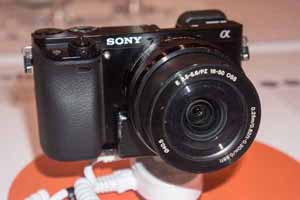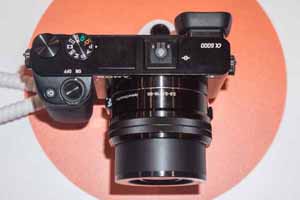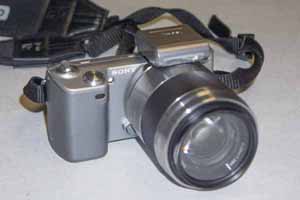Online Magazine
Recent Posts
- Safeguard your Cellphone Photos
- Black & White to Color – Instantly
- Wearing Many Hats
- Video Roundup
- Rescuing Your Blurry Pictures
- Showing Their Age
- What is Your Angle?
- Panorama Photos
- Humorous Photos
- Close Ups
- Fisheye Pictures
- Photo Antiquities
- Printing Big
- Appreciating Scale
- Celebrity Sightings
Tags
More Places to Go
- Free "How-To" Books “How To” books for popular cameras 0
- Vist Us on Facebook keep in touch with us on Facebook 2
Archives
- July 2023 (1)
- March 2023 (2)
- February 2023 (1)
- December 2022 (1)
- October 2022 (1)
- September 2022 (8)
- August 2022 (9)
- July 2022 (1)
- June 2022 (1)
- June 2021 (1)
- May 2021 (1)
- March 2021 (5)
- February 2021 (4)
- January 2021 (2)
- April 2019 (1)
- March 2019 (1)
- February 2019 (1)
- October 2018 (2)
- April 2018 (1)
- March 2018 (4)
- February 2018 (1)
- November 2017 (1)
- August 2017 (1)
- June 2017 (1)
- April 2017 (1)
- March 2017 (5)
- February 2017 (2)
- January 2017 (1)
- October 2016 (1)
- September 2016 (1)
- August 2016 (1)
- July 2016 (1)
- May 2016 (1)
- April 2016 (1)
- March 2016 (2)
- February 2016 (1)
- January 2016 (2)
- December 2015 (1)
- November 2015 (1)
- October 2015 (3)
- April 2015 (1)
- March 2015 (5)
- February 2015 (1)
- January 2015 (4)
- December 2014 (2)
- November 2014 (5)
- October 2014 (2)
- September 2014 (1)
- August 2014 (2)
- July 2014 (1)
- May 2014 (1)
- April 2014 (5)
- March 2014 (5)
- December 2013 (2)
- November 2013 (18)
- October 2013 (1)
- September 2013 (1)
- August 2013 (1)
- July 2013 (1)
- June 2013 (3)
- May 2013 (1)
- April 2013 (2)
- March 2013 (1)
- February 2013 (1)
- January 2013 (1)
- December 2012 (1)
- November 2012 (2)
- October 2012 (2)
- September 2012 (5)
- August 2012 (2)
- July 2012 (1)
- June 2012 (1)
- May 2012 (1)
- April 2012 (4)
- March 2012 (1)
- February 2012 (1)
- January 2012 (3)
- December 2011 (1)
- November 2011 (3)
- October 2011 (1)
- September 2011 (2)
- August 2011 (2)
- June 2011 (3)
- May 2011 (4)
- April 2011 (8)
- March 2011 (8)
- February 2011 (10)
- January 2011 (6)
- December 2010 (11)
- November 2010 (14)
- October 2010 (6)
- September 2010 (12)
- August 2010 (2)
- July 2010 (4)
- June 2010 (3)
- May 2010 (1)
- April 2010 (1)
- March 2010 (2)
- February 2010 (1)
- January 2010 (1)
- December 2009 (1)
- November 2009 (2)
- October 2009 (2)
- September 2009 (1)
- August 2009 (3)
- July 2009 (2)
- June 2009 (1)
- May 2009 (2)
- April 2009 (1)
- March 2009 (2)
- February 2009 (1)
- January 2009 (3)
Sony Alpha 6000
17th April 2014
Sony’s Newest “MILC” – Mirrorless Interchangeable Lens Camera
I’m apolitical when it comes to camera brands. I use equipment from Canon, Nikon, Sony, Olympus, etc.
When traveling for assignments I carry a quality camera and several lenses. For the past few years I’ve gravitated towards the smaller and lighter cameras. What’s more is that lenses for these cameras are also smaller and lighter too so packing is easier.
My go-to camera is now a Sony NEX7 which is half the size and weight of the Canon 6D or Nikon D800. But the one downside of the NEX7 is its slow focusing speed and accuracy in low light situations.
Naturally I was interested in seeing the new Sony A6000 at the Wedding and Portrait Photographers International Expo last month. This new model addresses the focusing issue by using “hybrid” phase detection for fast response combined with contrast detection for improved accuracy. Sony claims that the A6000 can record an amazing 11 frames per second with continuous autofocus. Whether shooting still or video this is a welcome and impressive feature packed into a camera this size and cost.
The A6000 at WPPI was equipped with a 18-50mm lens. Sony calls it a PZ “power zoom” in that it has a small button which automatically zooms in and out when depressed. When retracted this camera/lens combo is quite compact, yet it fits comfortably in my hands. The specs say that the camera body weighs less than 13 ounces – how’s that for a weight saver?
The A6000 has most of the same features of the NEX7 such as in-camera HDR, sweep panorama and multi-frame noise reduction. For me a bonus is the built-in wifi for transferring images to a mobile or computer device and the downloadable apps (for an additional charge) such as time lapse, automatic backup, photo sharing.
The Sony rep told me that the A6000 will be available about April 23rd. Price for the A6000 body is $649; for the A6000 with 18mm-50mm PZ lens is $799.
I have an A6000 on order and am looking forward to this as an upgrade to my NEX7.
Written by: Arnie Lee
Parade of Cameras 2
05th October 2012
Photokina Part 2 – the new stuff
Photokina is the largest photographic trade show and takes place every two years in Cologne, Germany. Photokina is a major venue where photographic manufacturers showcase their upcoming products. Here’s a short report about some of the new products that caught my attention during my short visit in late September.
 |
 |
Walking the aisles, I observed two opposing trends taking place among the photographic equipment makers.
On one side, there’s a movement towards larger sensors. Advanced and professional photographers have typically chosen equipment that produces the highest quality images regardless of size and weight. Equipment with larger, full-frame sensors have dominated this category. In Part 1 of this article, I described several of the new full-frame cameras that I demo’d at Photokina.
On the other side, there’s is a flood of activity devoted to making smaller, higher quality cameras.
(more…)
Delivering Higher Performance
16th September 2012
to those users who prefer going lightweight
Not long ago, I acquired a mirrorless interchangeable lens camera (MILC) – the Sony NEX5. I’ve found its small size to be very convenient and its light weight easy on my shoulder. But more importantly its picture-taking capabilities and quality of the photos rival those of the other cameras in my equipment inventory.
Having interchangeable lenses is a necessity for most serious photographers. So for many years SLRs and more recently DSLRs fit this bill. On the other hand, a MILC is designed as a compact alternative to a DSLR camera. Their small size is what attracted me to the Sony NEX series.
|
While on vacation for two weeks I used the NEX5. It proved to be a solid performer producing good exposures under a very wide variety of lighting conditions. This model has a 14mp APS-C size sensor, the same size used in many DSLRs and I found it gave me excellent quality images. MILCs are quiet since they lack moving mirrors. The camera’s controls were straight-forward and easy to use. I took advantage of several unique features not found in others such as sweep panorama (in-camera stitching of photos to make a wide panoramic view) and anti-blur (burst of several shots to increase likelihood of non-blurred image) modes and am more than satisifed with the results. |
|
Overall, I am pleased with the addition of the NEX5 to my arsenal of photo equipment. However it lacks two features that one would normally require for professional use:
- Viewfinder – the NEX5 lacks a viewfinder. Relying the LCD for composing is not only slower, but is often difficult in bright sun.
- Flash – the NEX5 has a small, built-in flash. However it lacks a flash shoe, making it difficult to use a standard strobe.



